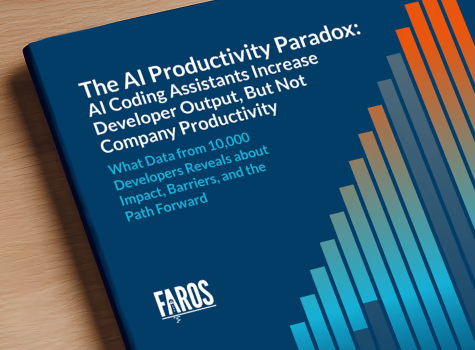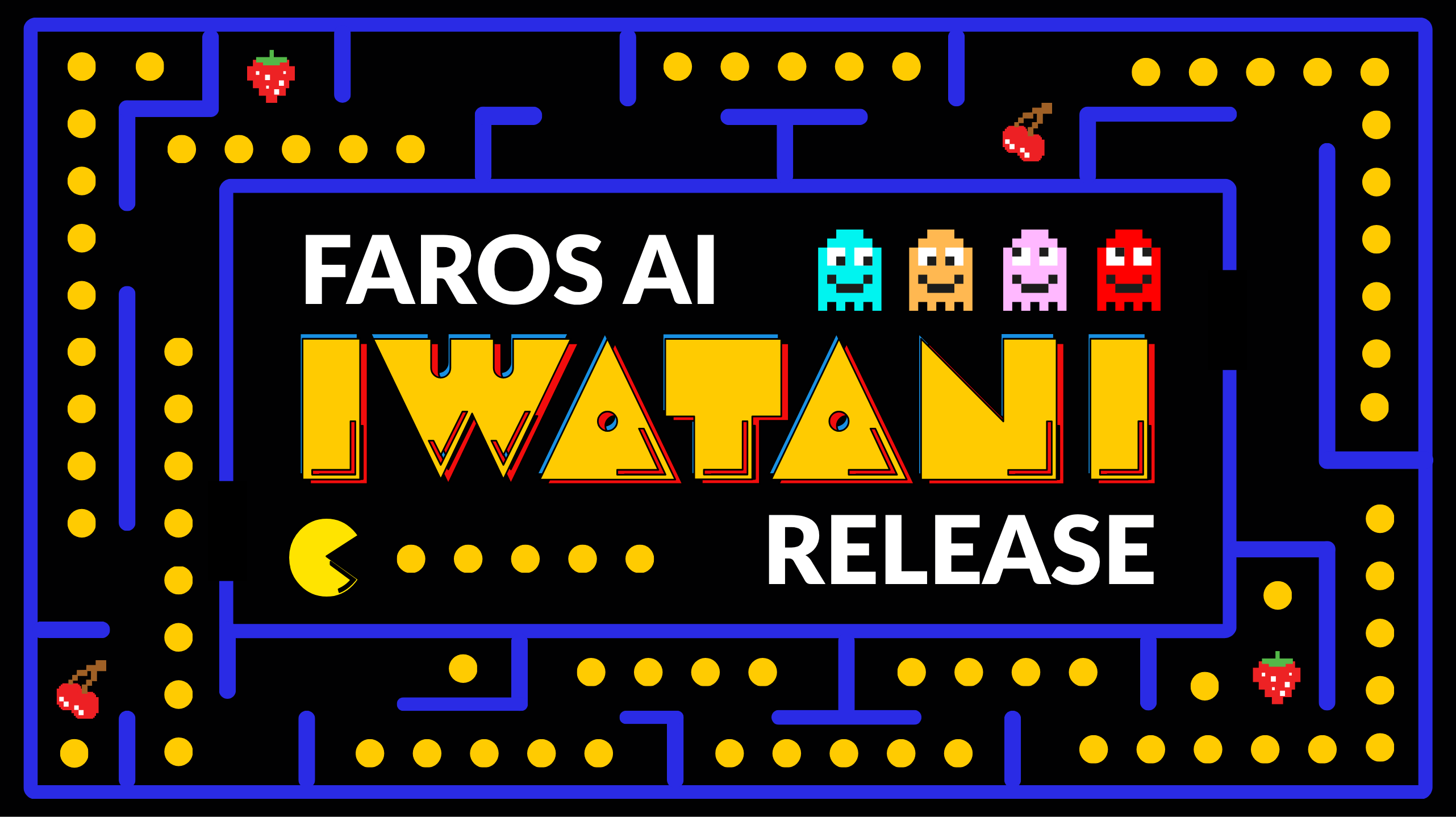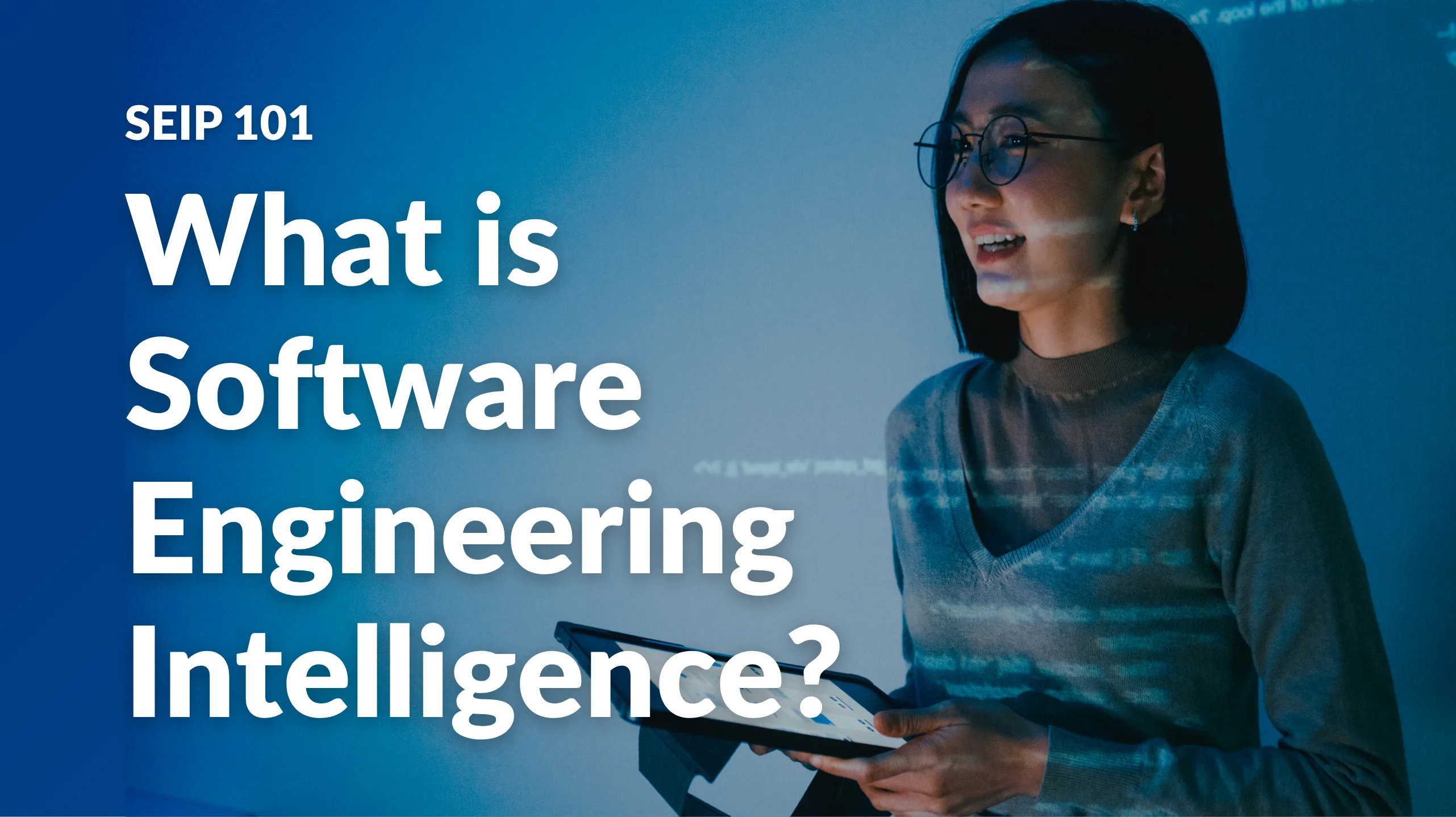How to choose the right software engineering metrics for every company stage
Software engineering metrics aren’t one-size-fits-all. The metrics that drive success for a Series A startup will differ dramatically from those needed by a Fortune 500 enterprise. Identifying which metrics matter at your company's current stage is crucial for building an effective engineering productivity program.
What are software engineering metrics?
Software engineering metrics are quantifiable measures that help organizations understand how effectively their development teams deliver value. The most comprehensive and balanced framework for measuring engineering productivity today is called SPACE, which stands for:
- Satisfaction and well-being
- Performance
- Activity
- Communication and collaboration
- Efficiency and flow
The SPACE framework advocates for a holistic view of productivity without being overly prescriptive, combining system-generated telemetry with developer sentiment gathered from surveys and interviews. The popular and widely adopted DORA metrics (Deployment Frequency, Lead Time, Change Failure Rate, and Recovery Time) are actually a subset of the SPACE framework.
In short: software engineering metrics track developer productivity, efficiency, and outcomes across multiple dimensions.
{{cta}}
Why company stage matters for selecting metrics in software engineering
Companies at different growth stages have fundamentally different priorities, which in turn dictate how to measure engineering’s effectiveness:
- Startups optimize for speed and product-market fit
- Growth stage companies focus on scaling technical capabilities
- Scale-ups must find the balance between speed and quality/reliability
- Mature companies optimize for profitability, efficiency, and standardization
Regardless of your stage, measuring multiple dimensions as recommended by SPACE, shields your program from unintended consequences and potential metric gaming. However, it’s important to choose the right dimensions for your current reality.
Note: AI is rewriting the software engineering discipline with the potential to significantly boost productivity. Every metric listed in this article can and should be measured before and after the introduction of new AI tools. Knowing where you start helps as you introduce more and more AI tools. Like every new technology, there may be tradeoffs. Metrics help implement a data-driven approach to where, when, and how to deploy AI.
Software engineering metrics by company stage
Here’s a stage-by-stage breakdown of the most relevant metrics in software engineering:
Startup stage: Rapid product innovation
Primary goal: Launch new features and find product-market fit.
Essential engineering metrics for the startup stage:
- Lead time and cycle times - How quickly can you go from idea to production?
- Throughput - How many features/fixes are you delivering?
- Deployment frequency - How often are you releasing?
- % delivered vs. committed - Are you meeting your sprint commitments?
- Bottlenecks - What's slowing you down?
Why these matter: At the startup stage, speed is everything. Tracking speed-oriented software engineering metrics enables startups to iterate quickly, test hypotheses, and pivot when necessary to achieve product-market fit.
Growth/expansion stage: Mature the product offering
Primary goal: Develop a technical strategy to support an expanding tech stack and team.
Essential engineering metrics for growth/expansion stage:
- All the metrics from the Startup stage
- Production stability (uptime, MTTR) - Is your system reliable as you scale?
- Platform/infrastructure effectiveness - Are your dev tools keeping pace?
- Cross-team dependencies - Where are handoffs creating delays?
- Code quality (coverage, test stability, smells, security) - Is technical debt manageable?
- Team productivity comparisons and benchmarks - Which teams are performing well?
- Team composition - Do you have the right skill mix?
- Developer satisfaction - Are your engineers happy and engaged?
- Revenue per R&D FTE - What's your return on engineering investment?
Why these matter: As you grow, complexity increases exponentially. Growth-stage companies need to blend speed metrics with stability and developer happiness, ensuring technical debt doesn’t overwhelm velocity.
Scale-up stage: Customer growth and retention
Primary goal: Balance speed with quality, safety, and reliability to support a growing customer base.
Essential engineering metrics for the scale-up stage:
- All the metrics from the startup and growth stages
- On-time roadmap delivery - Are you meeting customer commitments?
- Velocity and quality benchmarks (DORA 4) - All four DORA metrics become critical
- SLO and SLA compliance - Are you meeting service commitments?
- Security and privacy compliance - Are you meeting regulatory requirements?
- Resource allocation vs. ideal targets - Are teams working on the right things?
- Onboarding effectiveness - How quickly do new hires become productive?
- Developer wait time - Git performance, build time, CI reliability, test flakiness
- R&D OpEx per R&D FTE - What are your operational costs per engineer?
Why these matter: Customer expectations are higher and the cost of downtime or security issues increases significantly. Scale-up companies need software engineering metrics that ensure reliability without sacrificing innovation speed.
Maturity stage: Maximize profitability
Primary goal: Reduce costs, standardize to industry standards, and improve retention.
Essential engineering metrics for the maturity stage:
- All the metrics from the startup, growth and scale-up stages
- Initiative tracking and impact - Are your investments delivering expected returns?
- Infrastructure costs - How can you optimize your cloud spending?
- Migration and consolidation impact metrics - Are standardization efforts paying off?
- Individual and team performance - Detailed performance management becomes important
- Talent and skill composition - Strategic workforce planning metrics
Why these matter: For a mature company, optimization and cost management become paramount. You need granular software engineering metrics to identify inefficiencies, optimize resource allocation, and track ROI of engineering investments.
How to identify your current stage
To identify the stage of your company, consider the questions in the table below:
| 1. What is your primary business challenge? |
Finding product-market fit |
Scaling the team |
Managing complexities |
Optimizing costs |
| 2. How many engineers do you have? |
less than 10 |
10 to 50 |
50 to 200 |
more than 200 |
| 3. What keeps your leadership awake at night? |
Shipping features faster |
Stabilizing and expanding |
Customer satisfaction |
Profitability |
| Your company's stage: |
Startup |
Growth/Expansion |
Scale-up |
Maturity |
Getting started with metrics for software engineering
This article focuses on one of three top considerations for choosing software engineering metrics: what you need to achieve based on your company stage. Determining the right metrics for your company stage will help you make data-driven decisions about where to invest in tooling, process improvements, and team development. The other two considerations—how you work and your engineering culture—should also influence which metrics your company chooses.
Before finalizing which software engineering metrics to measure, take a beat to identify what’s important to you, how you define success, and what productivity looks like to you. Remember, the goal of a productivity measurement program isn't to micromanage developers—it's to identify opportunities for improvement and remove obstacles that prevent your team from doing their best work.
To learn how Faros AI can support your software engineering organization, reach out to us today.
{{engprod-handbook}}
FAQ: Metrics for software engineering by company stage
Q: What are software engineering metrics, and why do they matter?
A: Software engineering metrics are measurements that help teams understand performance, quality, and outcomes in engineering. They matter because they provide visibility into efficiency, developer experience, and business impact—helping leaders make evidence-based decisions instead of relying on gut feel.
Q: How should we start using software engineering metrics in our organization?
A: Start small. Don’t try to implement every metric at once. Choose 3–5 key metrics that fit your company’s stage and priorities. As your program matures, you can expand to a broader set of metrics in software engineering.
Q: What’s the difference between leading and lagging software engineering metrics?
A: Leading metrics predict future performance, like code review time or test coverage. Lagging metrics measure actual outcomes, like time-to-market or customer satisfaction. The most effective engineering organizations combine both types of metrics to get a full picture.
Q: How do we avoid teams gaming software engineering metrics?
A: Metric gaming happens when teams optimize for the metric itself rather than the real outcome it’s meant to measure—for example, closing lots of small pull requests just to boost velocity. To avoid this, balance your measurement approach. Don’t rely on a single metric; instead, measure multiple dimensions such as velocity and say/do ratios. Most importantly, focus on outcomes (customer impact, reliability, quality) rather than just outputs (number of commits, PRs). This ensures metrics drive the right behaviors instead of encouraging shortcuts.
Q: How often should software engineering metrics be reviewed?
A: Review metrics at least quarterly to ensure they still reflect business priorities and team needs. Metrics in software engineering should evolve as your company grows, your strategy shifts, or you notice unintended consequences from measurement.
Q: What are common pitfalls when implementing metrics in software engineering?
A: Common pitfalls include:
- Using advanced or mature-company metrics too early
- Tracking too many metrics before the basics are in place
- Interpreting numbers without context
- Forgetting that metrics must fit your engineering culture and values
Q: How can we get started with software engineering metrics right away?
A: To begin with the right metrics in software engineering:
- Identify your company’s stage of growth.
- Select 3–5 essential metrics for that stage.
- Establish baselines—know where you are today.
- Set up regular reviews (monthly is a good rhythm).
- Plan ahead for the next stage so your metrics scale with your team.


.avif)




